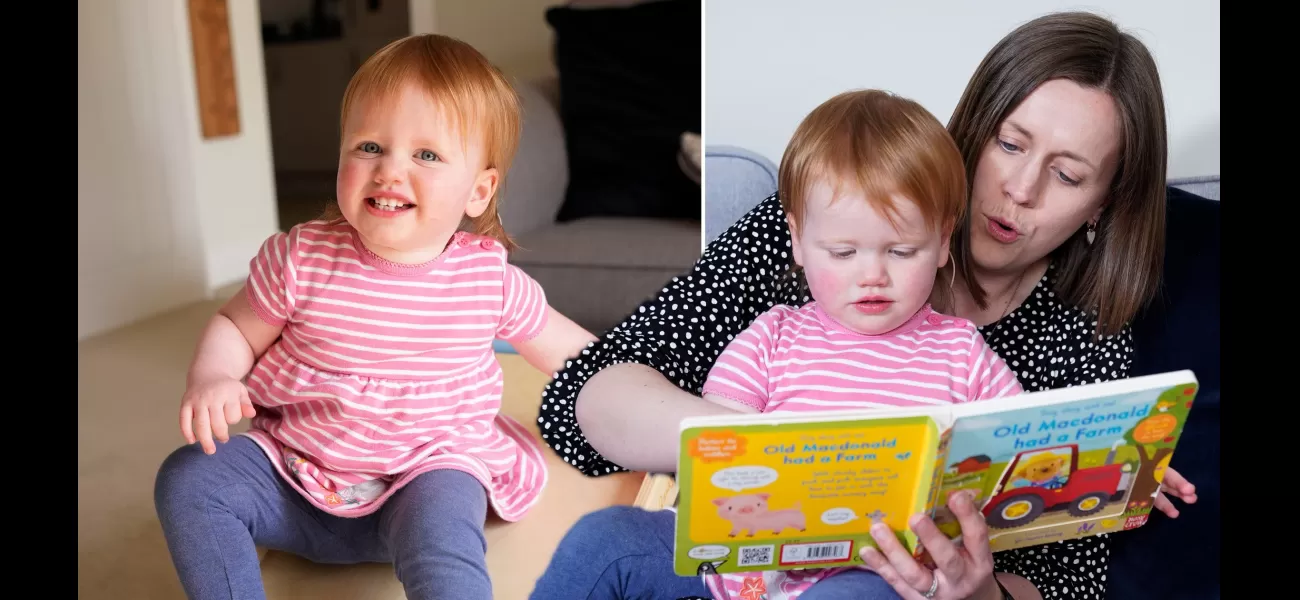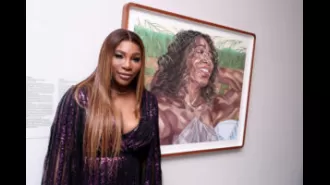Revolutionary genetic treatment successfully restored hearing in infant with deafness.
Opal was discovered to have hearing loss at just four days old.
May 8th 2024.

In September of last year, something extraordinary happened. Little Opal, who was only 18 months old at the time, underwent a groundbreaking gene therapy for deafness. Thanks to this innovative treatment, she was able to hear for the very first time. Her parents, Jo and James Sandy, were overjoyed and couldn't believe the incredible progress their daughter had made.
It all started when Opal's parents learned about CHORD gene therapy from an ear, nose, and throat surgeon at their local hospital. They were eager to explore any and all options that could help improve Opal's hearing. So, during surgery, Opal received a gene therapy infusion in her right ear. In addition, she was also fitted with a cochlear implant in her left ear to ensure she had some level of hearing.
Opal's parents were told that she was deaf when she was just four days old. It was devastating news, but they were determined to do everything in their power to help her. And now, seeing their daughter respond to sound, just weeks after the surgery, was truly miraculous.
Jo recalls the moment they realized Opal could hear. It was about three weeks after the surgery, and they were testing different sounds, like banging and clapping. Jo had no idea that Opal's implant had come off, and she was shocked when Opal turned to the loud clapping. She repeated the test a few times, and each time, Opal responded to the sound. Jo couldn't believe it and immediately texted James, telling him, "I think it's working!" They were both amazed and grateful for the progress their daughter had made.
What's even more incredible is that Opal can now hear without the help of her cochlear implant. When her parents were told about the gene therapy, they were informed that there's a chance Opal could eventually hear without the implant, but they never imagined it would happen so soon. The surgeon who performed the surgery was familiar with Professor Manohar Bance's work and knew about a clinical trial using gene therapy at Addenbrooke's Hospital in Cambridge.
As expected, the Sandys noticed a significant improvement in Opal's hearing in the 18 to 24 weeks following the surgery. The current standard treatment for genetic auditory neuropathy, the condition Opal and her older sister Nora have, is a cochlear implant. But now, thanks to the gene therapy, Opal can hear perfectly well without the implant.
The team at Cambridge University Hospitals reported that Opal had near-normal hearing by 24 weeks after the surgery. This incredible achievement was made possible by CHORD gene therapy, which uses a modified virus to deliver a working gene to a specific part of the body, such as the ear. The virus's genome is replaced with a functioning version of the mutated gene, and only a few essential parts of the original virus remain, which are not harmful.
The clinical trial, called CHORD, is being conducted by the Cambridge University Hospitals NHS Foundation Trust and focuses on using gene therapy called DB-OTO for children with Otoferlin gene mutations, which can cause profound hearing loss. This therapy involves an injection of DB-OTO into the ear during a surgical procedure under general anesthesia, similar to the surgery for a cochlear implant. The DB-OTO contains a modified small virus, known as the adeno-associated virus, which can deliver genetic material to specific cells and restore their function.
The Sandys have an older daughter, Nora, who also has the same genetic form of auditory neuropathy. She currently wears cochlear implants, but her parents are hopeful that she may also benefit from gene therapy in the future. They were told when Nora was nine months old that any future children could have additional hearing tests at birth. While it was difficult for the Sandys to hear that both of their daughters were deaf, they were determined to do everything they could to help them. And now, thanks to the incredible advancement in gene therapy, Opal and Nora have a bright future ahead of them.
It all started when Opal's parents learned about CHORD gene therapy from an ear, nose, and throat surgeon at their local hospital. They were eager to explore any and all options that could help improve Opal's hearing. So, during surgery, Opal received a gene therapy infusion in her right ear. In addition, she was also fitted with a cochlear implant in her left ear to ensure she had some level of hearing.
Opal's parents were told that she was deaf when she was just four days old. It was devastating news, but they were determined to do everything in their power to help her. And now, seeing their daughter respond to sound, just weeks after the surgery, was truly miraculous.
Jo recalls the moment they realized Opal could hear. It was about three weeks after the surgery, and they were testing different sounds, like banging and clapping. Jo had no idea that Opal's implant had come off, and she was shocked when Opal turned to the loud clapping. She repeated the test a few times, and each time, Opal responded to the sound. Jo couldn't believe it and immediately texted James, telling him, "I think it's working!" They were both amazed and grateful for the progress their daughter had made.
What's even more incredible is that Opal can now hear without the help of her cochlear implant. When her parents were told about the gene therapy, they were informed that there's a chance Opal could eventually hear without the implant, but they never imagined it would happen so soon. The surgeon who performed the surgery was familiar with Professor Manohar Bance's work and knew about a clinical trial using gene therapy at Addenbrooke's Hospital in Cambridge.
As expected, the Sandys noticed a significant improvement in Opal's hearing in the 18 to 24 weeks following the surgery. The current standard treatment for genetic auditory neuropathy, the condition Opal and her older sister Nora have, is a cochlear implant. But now, thanks to the gene therapy, Opal can hear perfectly well without the implant.
The team at Cambridge University Hospitals reported that Opal had near-normal hearing by 24 weeks after the surgery. This incredible achievement was made possible by CHORD gene therapy, which uses a modified virus to deliver a working gene to a specific part of the body, such as the ear. The virus's genome is replaced with a functioning version of the mutated gene, and only a few essential parts of the original virus remain, which are not harmful.
The clinical trial, called CHORD, is being conducted by the Cambridge University Hospitals NHS Foundation Trust and focuses on using gene therapy called DB-OTO for children with Otoferlin gene mutations, which can cause profound hearing loss. This therapy involves an injection of DB-OTO into the ear during a surgical procedure under general anesthesia, similar to the surgery for a cochlear implant. The DB-OTO contains a modified small virus, known as the adeno-associated virus, which can deliver genetic material to specific cells and restore their function.
The Sandys have an older daughter, Nora, who also has the same genetic form of auditory neuropathy. She currently wears cochlear implants, but her parents are hopeful that she may also benefit from gene therapy in the future. They were told when Nora was nine months old that any future children could have additional hearing tests at birth. While it was difficult for the Sandys to hear that both of their daughters were deaf, they were determined to do everything they could to help them. And now, thanks to the incredible advancement in gene therapy, Opal and Nora have a bright future ahead of them.
[This article has been trending online recently and has been generated with AI. Your feed is customized.]
[Generative AI is experimental.]
0
0
Submit Comment





